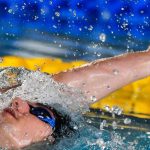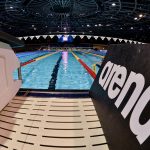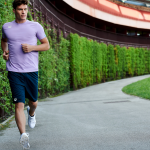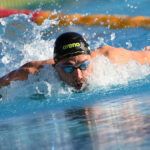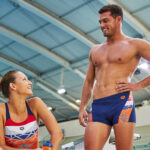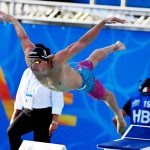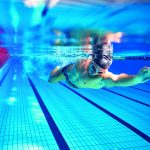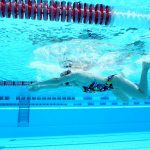4 Swimming Endurance Training Sessions for Long Distances
Long-distance swimming is a great way to put your endurance abilities to the test. Many athletes compete in distance swimming events because of the challenge these competitions provide for both the mind and the body. Whether you are new to endurance swimming or you want to start swimming even longer distances, it is crucial to take your swimming endurance training seriously so you can accomplish your goals while staying safe out in the water.
This article will cover essential tips for you to prepare your body for long-distance swimming. Endurance swimming requires a lot from the body, so we will look into some of the best ways to prepare yourself, like developing an aerobic base and cross-training to supplement your swimming.
Then, we will outline four swimming endurance training sessions. These swim workouts will include both conventional endurance work and training for changes in pace. This will allow you to build a good aerobic base and help you learn how to handle changes in pace that are vital come open-water race day.
Develop a Solid Aerobic Base
As a long-distance swimmer, maintaining your aerobic base is the secret to staying in top shape. Possessing a solid aerobic base will maintain your cardiovascular, respiratory, and muscular systems throughout a long swim.
Aerobic exercise is when the body creates energy with the presence of oxygen. This occurs when you perform an activity at an intensity between 60% and 80% of your maximum heart rate. When you surpass this level of intensity, your body crosses what is called the anaerobic threshold. Once the threshold is passed, your body generates energy without oxygen using the lactic acid system.
Aerobic training improves the efficiency of your cardiovascular and respiratory systems, and to be successful as an endurance athlete, you need your heart and lungs functioning at peak performance. When these systems are in good shape, more oxygen-rich blood can reach your organs and muscles, allowing you to perform endurance activity for extended periods without experiencing excessive muscle fatigue related to a build-up of lactic acid from anaerobic activity.
Training within 60-80% of your maximum heart rate will work your cardio and respiratory functions. As you continue to train at these intensities, you’ll find that you can continue to raise the bar of your aerobic base. This means you can train at higher intensities without crossing the anaerobic threshold. As your aerobic base increases, you’ll be able to swim greater distances while experiencing less muscle fatigue.
Consider Cross-Training
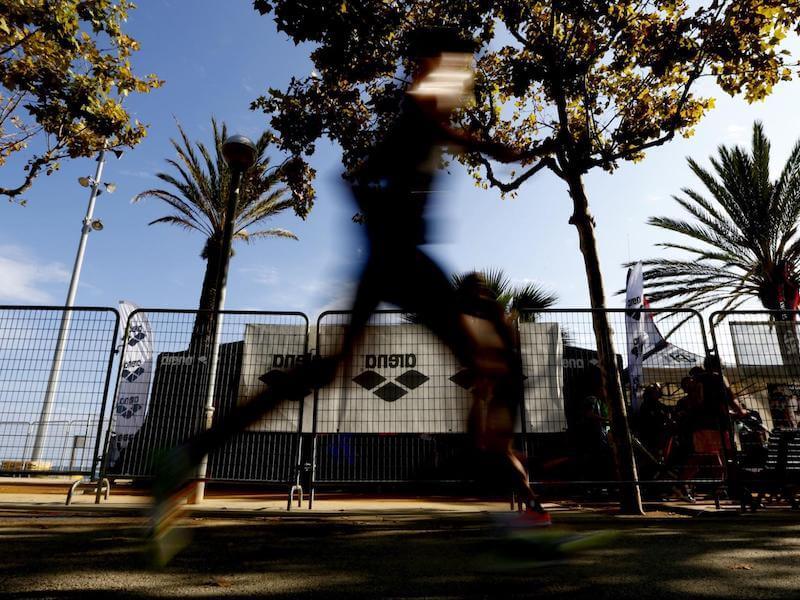
Cross-training is an excellent supplement for swimming endurance training. There are great opportunities for both aerobic and anaerobic exercise out of the pool.
The major benefits of cross-training include working different muscle groups and avoiding mental burnout. Cross-training allows you to train more frequently because you can let tired muscle groups rest while working out another part of your body. It is also a great way to keep your training sessions interesting so you don’t lose out on performance due to burnout.
Aerobic Cross-Training Options
Remember to maintain your heart rate within the aerobic activity level to develop your base.
Two of the most common aerobic cross-training activities are performed by triathletes in adjunct with swimming: running and cycling. Both of these movements will give your shoulders some much-needed rest after long training sessions in the pool. Plus, looking down at a swim line or into the deep abyss of an open-water swim can get somewhat monotonous after a while. Running or cycling allows for a pleasant change of scenery.
Another excellent option for a full-body workout is to use a rowing machine. Rowing is an activity that translates well to swimming. Many of the muscles used in the rowing motion are also used while swimming.
Anaerobic Cross-Training
Strength training and other dryland training are good for exercising your anaerobic fitness levels. As a distance swimmer, you should place much of your focus on aerobic activity, but that doesn’t mean you should neglect anaerobic exercises altogether.
Strength training and dryland training will improve the fitness of all your major muscle groups. More strength in your muscle groups will allow them to exert more significant amounts of force for a longer period of time, meaning you’ll be able to swim faster.
Use exercises like push-ups, chin-ups, and dips to train your arms for swimming. Perform dumbbell/barbell rows and pull-ups to train your back. To prepare your legs, squats and lunges make great options. Finally, target your core with exercises like sit-ups and planks.
4 Swimming Endurance Training Sets
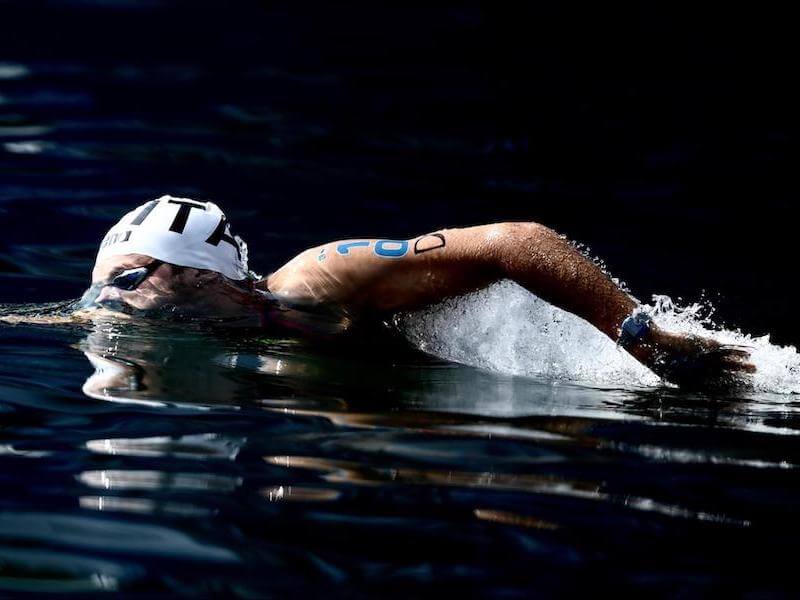
Below are swimming endurance training exercises. Take note of the difficulty level provided with each swim training session. If you are a beginner, choose a set that you can complete in its entirety before moving on to more difficult sets.
Training Session 1 (Expert Swimmers)
Warm-up:
- 10 minutes of easy swimming at your own pace
- 8 x 50 freestyle with a pull buoy and snorkel
- Focus on your body position and the catch phase with 20 seconds of recovery
- 4 x 100 broken up as follows: 25 meters sculling / 50 meters freestyle breathing every five strokes / 25 meters backstroke legs / 20 seconds of recovery
Main set:
- 4 x 600 freestyle broken up as follows: 3 x 200 intervals with 10 seconds of recovery after the first and second 200 and 60 seconds of recovery after the final 200.
- Breaking down the session into intervals will help you work at a higher intensity so that you can maintain a faster swimming speed in even the longest races. During this session, try to stay just on the brink of the anaerobic threshold. This is extremely hard training and is only recommended for experienced swimmers.
After completing the main set, cool down at your own pace.
Training Session 2 (Experienced Swimmers)
Warm-up:
- 10 minutes easy at your own pace
- 12 x 25 fast legs with a kickboard (20 seconds of recovery in between)
- 1 x 200 broken up as follows: swim 25 meters with one arm / 25 meters with the other arm / 50 meters with both arms breathing every seven strokes
Main set:
- 1 x 50/100 with 5/15 seconds of recovery, respectively
- 1 x 50/100/150 with 5/10/20 seconds of recovery, respectively
- 1 x 50/100/150/200 with 5/10/15/30 seconds of recovery, respectively
- 1 x 50/100/150/200/400 with 5/10/15/20/60 seconds of recovery, respectively
- 1 x 50/100/150/200 with 5/10/15/30 seconds of recovery, respectively
- 1 x 50/100/150 with 5/10/20 seconds of recovery, respectively
- 1 x 50/100 with 5/15 seconds of recovery, respectively
- The aim is to maintain a fast pace over shorter intervals. The longer recovery at the end of the mini-sets will allow you to be ready for the next set.
After completing the main set, cool down at your own pace.
Training Session 3 (Intermediate and Experienced Swimmers)
Warm-up:
- 1 x 200 at your own pace
- 1 x 200 legs with a board
- 1 x 200 with a pull buoy
- 3 x 50 freestyle at medium intensity (20 seconds of recovery between each)
- 3 x 50 freestyle at medium-high intensity (20 seconds of recovery between each)
Main set:
- 8 x 50 alternating high and low intensity (15 seconds of recovery between each)
- Odd numbered laps should be high intensity and even numbered laps should be low intensity
- 4 x 100 freestyle at race pace (10 seconds of recovery between each)
- 2 x 200: 75 meters aerobic / 25 meters fast / 75 meters aerobic / 25 meters fast (20 seconds of recovery)
- One-minute extra recovery
- Repeat the set
- This session is based on changes in pace so that you can keep your heart rate at the anaerobic threshold. The extra minute between the two sets will allow you to maintain a high intensity even when the training load starts to get heavy.
After completing the main set, cool down at your own pace.
Training Session 4 (All Swimmers)
Warm-up:
- 10-15 minutes at your own pace
Main set:
- Test over 2,000 meters or 3,000 meters in a pool or open-water.
- If you can, test your fitness in the sea or a lake. Try entering into an open-water competition. Take advantage of this to test yourself and train differently. Even if you only use an open-water race as a training session, the conditions will be completely different from those of a pool and will add diversity to your training. The intensity, weather/water conditions, and your emotional state will all be different.
Get Out There and Train to Go the Distance
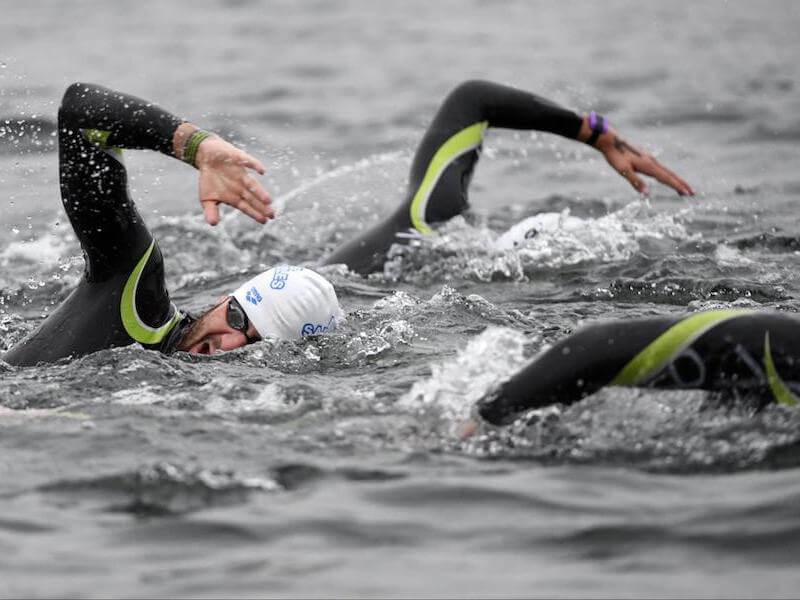
Now that you understand how you can develop a solid aerobic base and what type of cross-training you can do to supplement your swimming endurance training, it’s time to head out to your local pool and start practicing. As you notice your aerobic base begin to strengthen, you can increase the intensity to prepare your body to swim even greater distances.
Whether you’re new to long-distance open-water swimming or you’re training for your next triathlon, be sure you’ve got the best swimming wetsuit (for men and women) to keep you warm and swimming at peak performance.
Written by:
arena coaches
Swim coaches, trainers and experts will give you all kinds of tips for performing at your best in both training and races.
